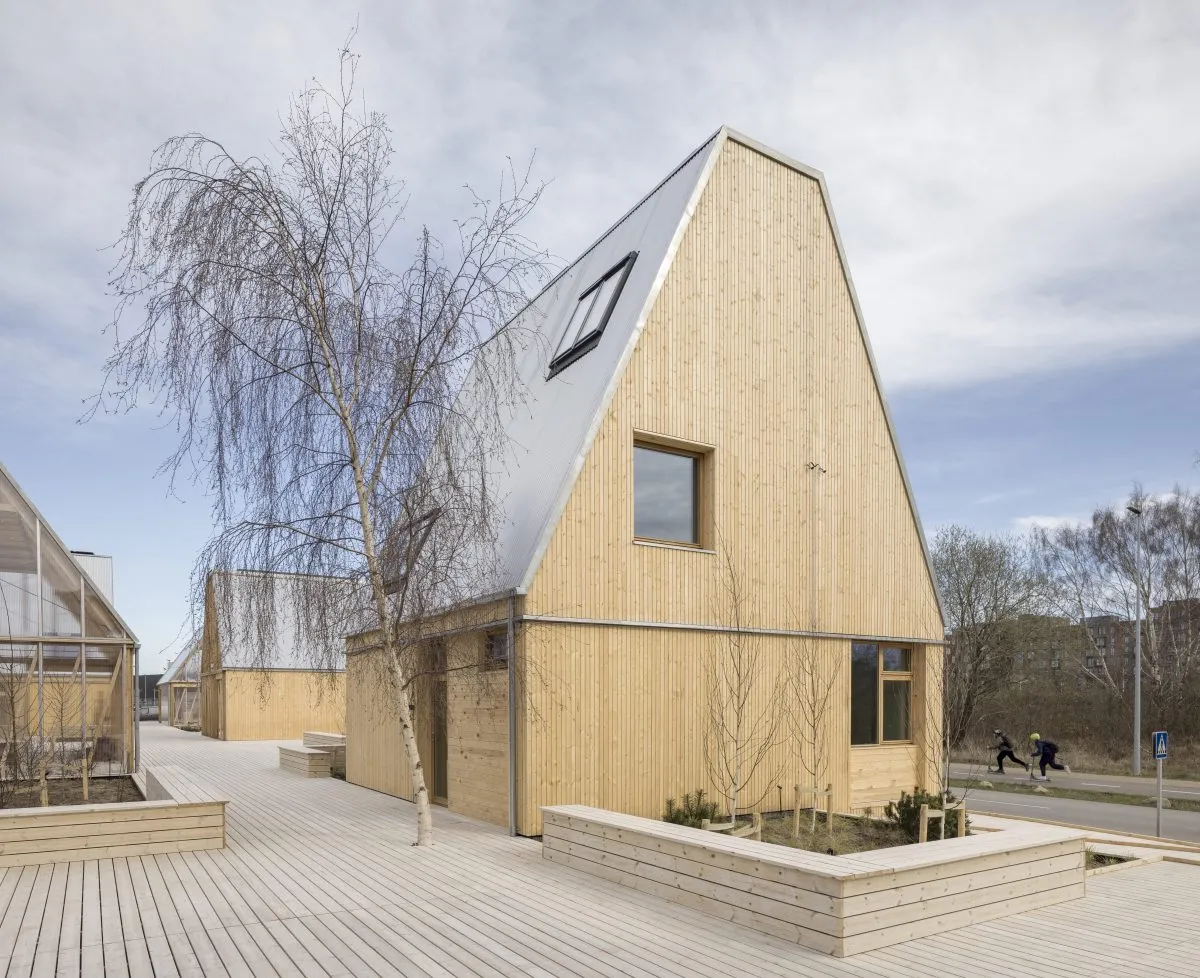The building industry accounts for an astonishing 37 per cent of global carbon dioxide emissions. To address this, the roof-window specialists VELUX recently launched Living Places Copenhagen: an open-source “experimental living environment”.
The seven prototype buildings, including community pavilions and two homes, are designed to reduce environmental impact and improve human health – and VELUX have been able to cut their carbon footprints by one-third.
But how did they do it? We spoke to Lone Feifer, Director for Sustainable Buildings at the VELUX Group, to find out more.
The materials for the houses are sourced locally. Does that play a big part in reducing their carbon emissions?
There are many phases in a building’s full lifecycle, including the extraction of the materials, transport, construction, operations, and end of life. The transport phase is not actually that significant in terms of carbon emissions. But there are other reasons for using local materials. In many ways, a lot of today’s housing has become very generic, like cookie-cutter houses. In the project we wanted to make something that has a vernacular flavour.
If you look at how houses were built in the past, they were constructed using materials that matched their location. Houses near the coast, for example would be built with wind, salt, and other climatic conditions in mind. But we seem to have forgotten that and put housing on a strict form and recipe. We’ve developed tunnel vision for keeping heat in winter houses, but that means they become heat traps in the summer. The houses we live in need to be more connected to us and be adaptive to different conditions.
It’s also about access: there are no materials used in the Living Places houses that you couldn’t buy at a local DIY shop today.
Why did you choose to use timber in the houses?
Timber has several advantages: it is less resource-draining than concrete and it can be made as fireproof as a concrete building. It’s also a renewable resource, and a condition of certified forestation is that you plant another tree when you take one.
But a less technical advantage of timber is that we can relate to it. I have seen people subconsciously touching and connecting to it when they come through the houses. I think it’s because timber has cells like we do, and it will expand and breathe with humidity and temperature. We instantly feel better because we feel we can relate and connect to the material.
What surprised you during the three-year process of developing these houses?
The key surprise was how far the architects and engineers discovered they could go when working together. We talked to another project also trying to innovate and get their carbon footprint as low as possible, but they did the classic thing of separating their process into the architect doing the design, sending it to the engineer, who sends it to the developer or contractor.
We put all three together, and the three learned so much through discussions and challenging each other – like finding that you can use natural ventilation rather than mechanical.

Is there scope for this model to be integrated into the wider building industry?
That’s the ambition. We specifically made the buildings as a concept because we want to be able to share the recipe with others. We’ve done over three years of work and have come out with a tried-and-tested prototyped, but the next step is to build it at scale. A key part of this means providing all of our data to housing developers so that they can test changes to materials such as different cladding or an alternative foundation.
If we compare this project to cooking, it’s like having surprising meals put together in new and interesting ways. It’s a matter of which ingredients you find and what you do with them: how you put it together, how you cook it, how you serve it will be different from anyone else. What we’ve done is made a recipe with a list of ingredients which we are happy to pass on to the world – but it will have different flavours (or, in building terms, the coverings, claddings and shapes of the room) – because houses don’t have to all look the same.
How much will these houses cost, and are there plans to create homes like these in other countries?
They cost same as standard housing in Denmark. What will cost more is for the builder to make it different – but we have eliminated the risks and answered the ‘what if’ questions. We are already working with people in the UK and Germany on realising the Living Places concept, including a developer who plans to build both row houses and a multi-family full story unit as soon as 2024.

How can we apply these concepts in our own, existing homes?
Most future housing is already here. The best thing we can do in terms of sustainability is to maintain the homes we have built, care for them and keep them going. The bulk of our challenge in ‘building new’ was influencing building regulations – because we use new-builds to understand existing housing.
Your health is the biggest investment in any home. Avoid humidity and act on mould. Bring in good quality air and enough light so that your body clock works well and you sleep well at night. There’s a German word, Stoßlüften, for opening your windows at a certain time of the day to ventilate your house. The COVID-19 pandemic changed our whole understanding of ventilation and how important it is: having good quality air is conditional to our health and wellbeing.
What is important in building a good home?
Part of the design task is identifying the functions you need and the size you need them to be – while using fewer resources and less space. You also need community – the places where you can have a big family dinner and meetings with friends. This was also obvious during the pandemic: a sense of community and knowing your neighbours is an essential part of belonging. That’s why we built the seven ‘shapes’ including community buildings – not just the one house. It all comes back to the idea that if you feel at home, you will like your house and take care of it.
Read more:

